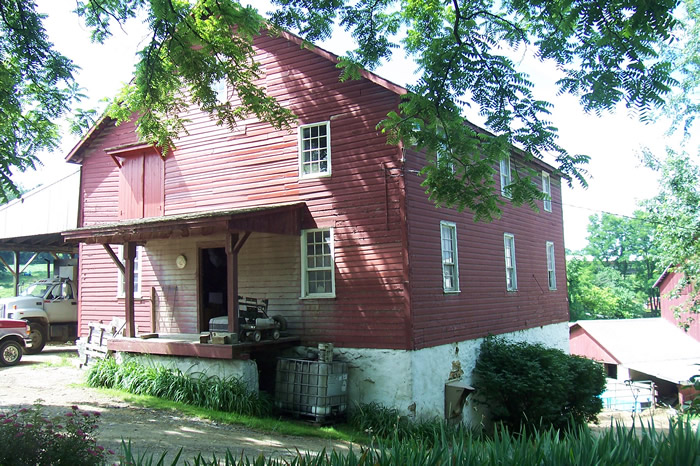
Glennville Grist Mill
Chester Co. | Pennsylvania | USA
Watersource: Muddy Run
Glennville Grist Mill
At the junction of Pa 41 and Pa 10, take Pa 10 SW to Cochranville, then go an additional 3 miles to Glennville. The mills are on the left in a farm complex around some curves before crossing Muddy Run

The mills were known as the Parker Cotton Mills in 1800. Both the grist and cotton mill at this location were initially part of these Parker Cotton Mills; which, "some sources" say produced the first calico cloth in the United States.
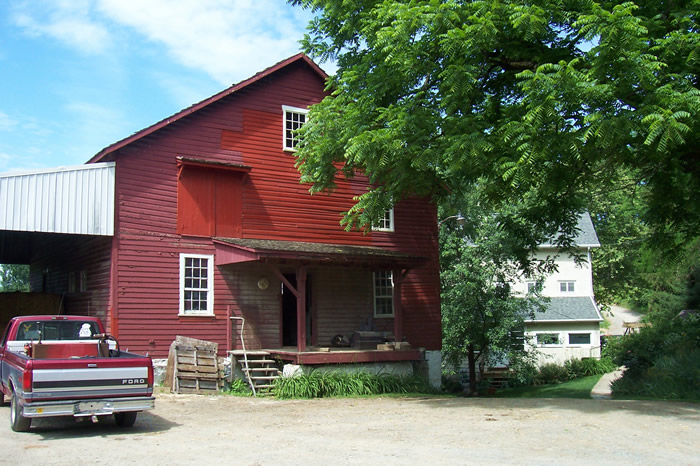
The Cotton Factory consisted of a large three story stone cotton factory, a three story stone drying house, a two story brick dwelling, a large barn, wagon shops, a smithy, and about eighteen other workers dwellings.
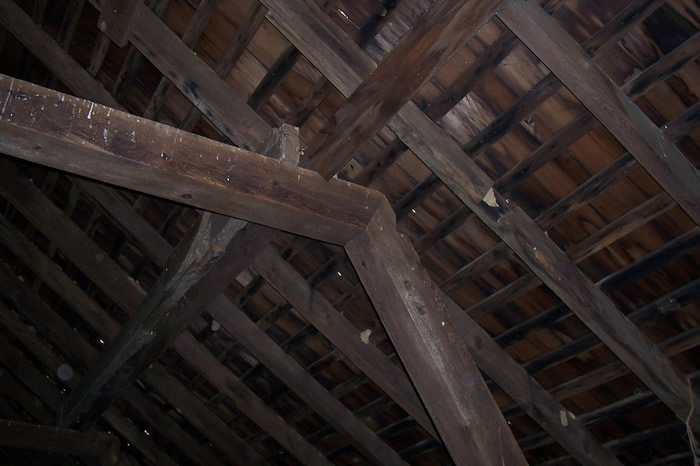
Inside, upstairs of the red frame building that in 1831 was part of a calender mill for the cotton/woolen factory. A calender machine calendered cloth by pressing the cloth between rollers to make it smooth-the name derived from cylinder (roller).
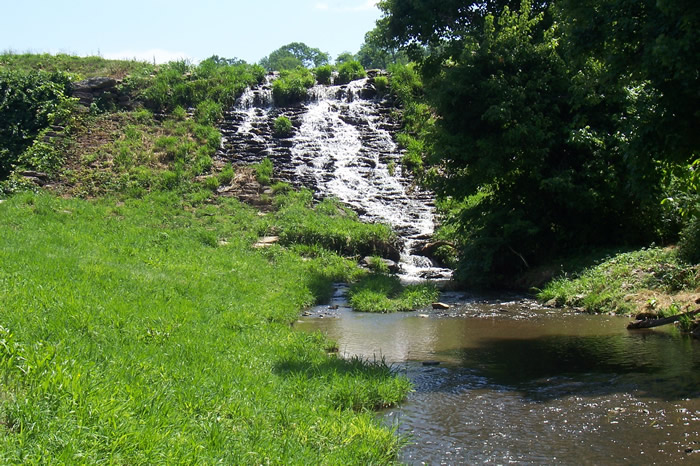
The rubble-fill dam of Cochranville Dam Pond. The dam existed since 1847. The dam broke in in 1889, the same year as the Johnstown Flood-a year of tremendous rainfall. Several houses were washed downstream with loss of life, animal & human. In the first two or three decades of 1900, the mills were more or less not operating. James Findley Franklin converted the cotton mill into a dwelling and the grist mill into a bathhouse. The mill pond became an attraction for swimming, fishing, and boating for folks with no charge attached to their use. *Update: In the statement that no charges were made for use of the dam - we did charge a dime for parking. On nice weekends, we had quite a crowd. Also charged a small fee for campers as well as a fee for turning on floodlights for ice skating. We operated a refreshment stand on the property, ice cream, candy, soft drinks, etc. Anna M. Tobelmann, nee Franklin 06/14/2010*
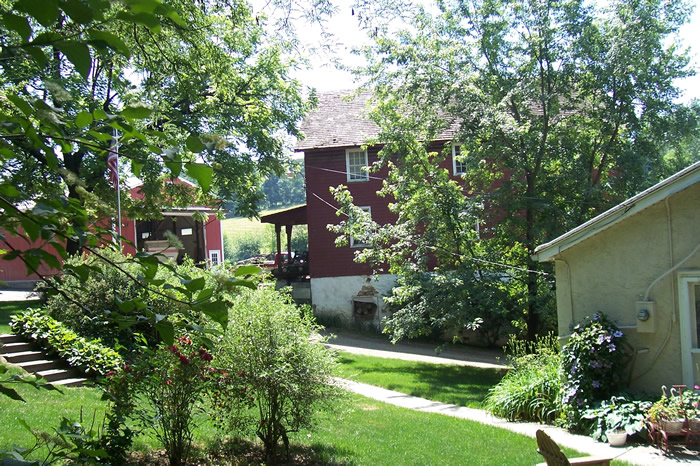
Backtracking, In 1830, the mills, the property of James M. Lewis, were sold at Sheriff sale to Jacob Kernouse. It was during this time, that the red calender mill (later grist mill) was the site of preaching by Methodist preachers, Thomas Sumpson 1831-1832 and Jacob Edwards 1835-1836. Next owner, Samuel Cochran was financially strapped in 1833 and the Glennville Cotton/Woolen Mills suffered bankruptcy. James Wilson was the next owner through 1847, then General J. Harlan in 1848. The grist mill, with two run of 48' stones was rented out to various millers or millers were hired for wages by Harlan. The mill passed to Richard B. Taylor in May, 1856.
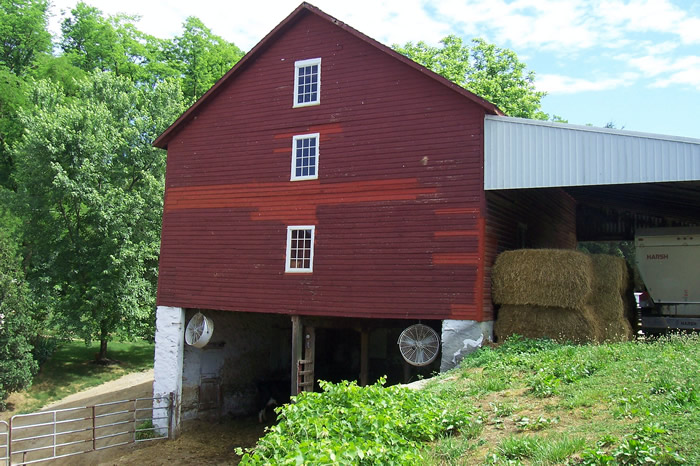
Josiah Harmer continued to operate the cotton mill until his supply of cotton was cut off by hostilities during the Civil War. In 1868, James Turner sold the mills to John W. White; then in 1873, Dr. Robert L. McClellan (later Senator McClellan) purchased the property. In 1890, Annie Baxter transferred the mills to Will Williams. Williams bought a 12" verticle water turbine from the Christiana Machine Company, greatly improving efficiency of the mills after 1894.
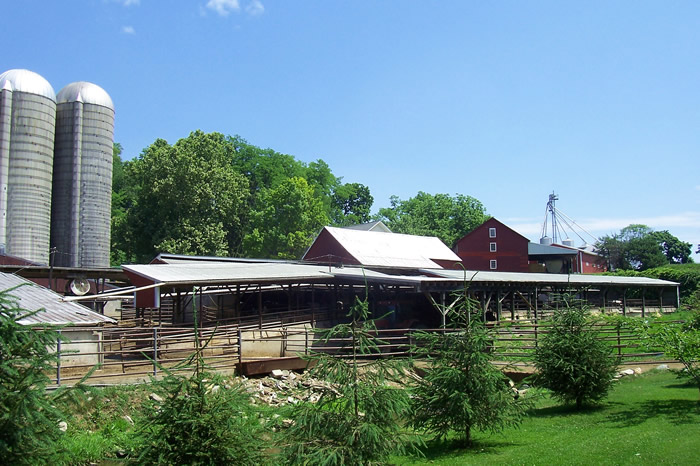
Carbon Franklin, son of J. Findley Franklin, sold the now 296 acre Glennville Mills Farm to Everett O. Binkley in 1946. The mills hadn't operated since the turn of the 20th century, so Binkley farmed the land for about ten years, finally selling to Norman Laffey in 1952. Norman Jr. and family still farm & operate a successful dairy operation while living in the converted remaining stone building of the Glennville Cotton/Woolen Mills. Thanks to Ina Jacobs for information gleaned from her historical paper of 1975 entitled "Glennville Mills". A document of the Octorara Area Historical Society- Vol. 5, No. 6.